In the last decades, football has become more dynamic and styles such as Voetbal totaal have established themselves in the modern game. This made systems to, what Guardiola calls them, “phone numbers” and teams more and more often utilise positional interchanges in order use many different shapes in one match. Moreover, positional interchanges and rotational movements have become basic. Many of the current successful coaches attempt to take advantage of these concepts in order to get their players into positions where they can make use of their strengths. One of these phenomena in football tactics is the hybrid midfielder.
In the following tactical analysis we will reveal the idea lying behind the usage of hybrid roles in midfield. Moreover, we will point out the advantages and possible weaknesses of this concept with the help of analysing current hybrid midfielders.
The definition of hybrid midfielders
There do exist some slightly different definitions of the term hybrid midfielder. In general, a hybrid player is a player who combines different positions in one game. Ideally, the player is capable of utilising his strengths on both positions in the particular phase of the game.
Some definitions also describe a player who possess the skills of pulling the strings in possession as well as organising the defensive block out of possession with defensive qualities as a hybrid midfielder. However, we will mainly focus on midfielders who take over different positions depending on the game situation in our further analysis.
The “false” winger
A common position which is used for hybrid players is the position of the wide forward. Some sides playing with high full-backs line up wingers with playmaking abilities. However, one has to be careful with this position since the usual movement of a winger who tucks inside cannot be seen as a hybrid midfielder.
Christian Eriksen at Tottenham is one example for the “false” winger. Under Mauricio Pochettino, the Danish midfielder is lined up on the wing in some matches.
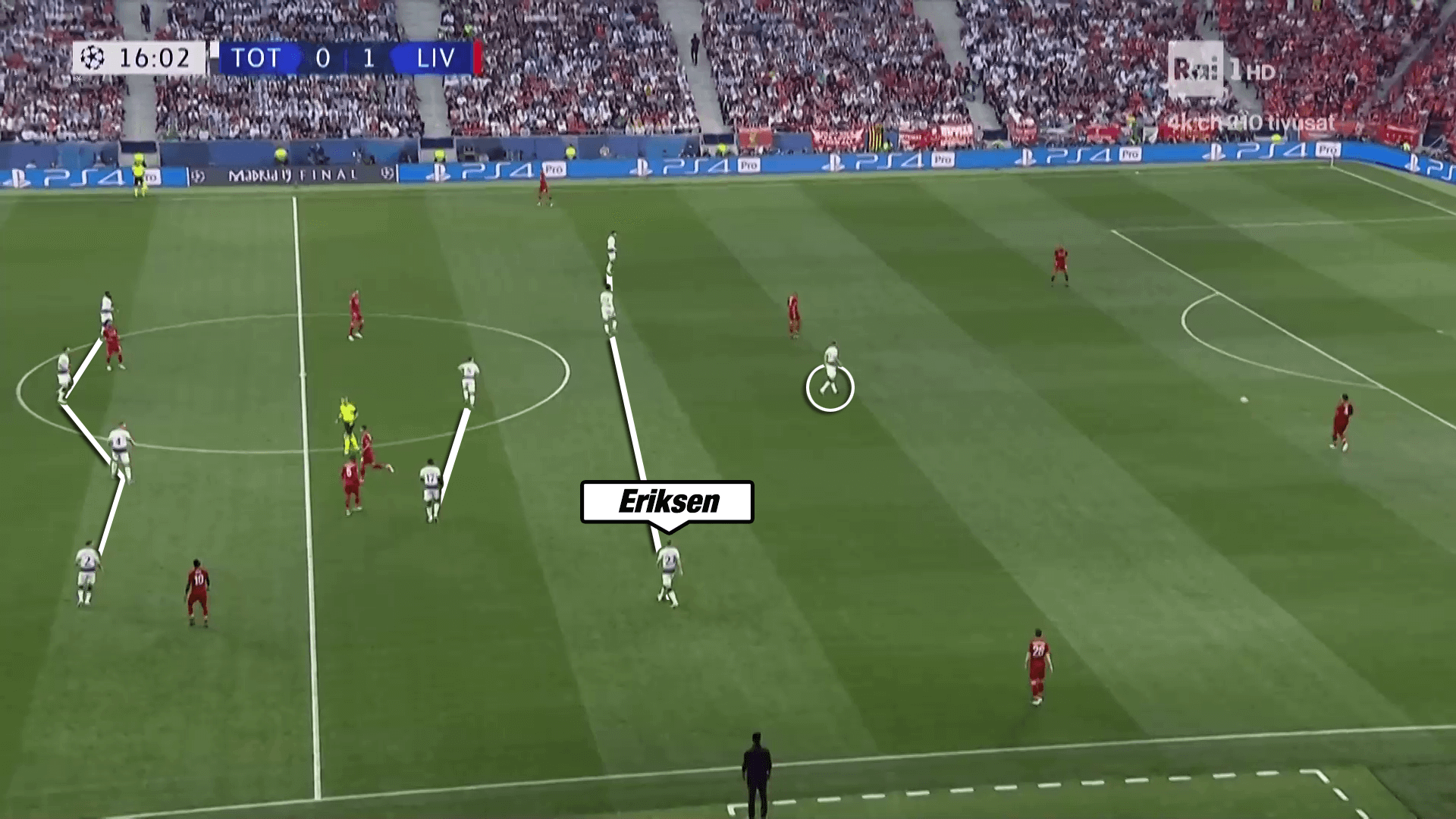
During the defensive phase, Eriksen positions himself on the right wing in a 4-2-3-1.
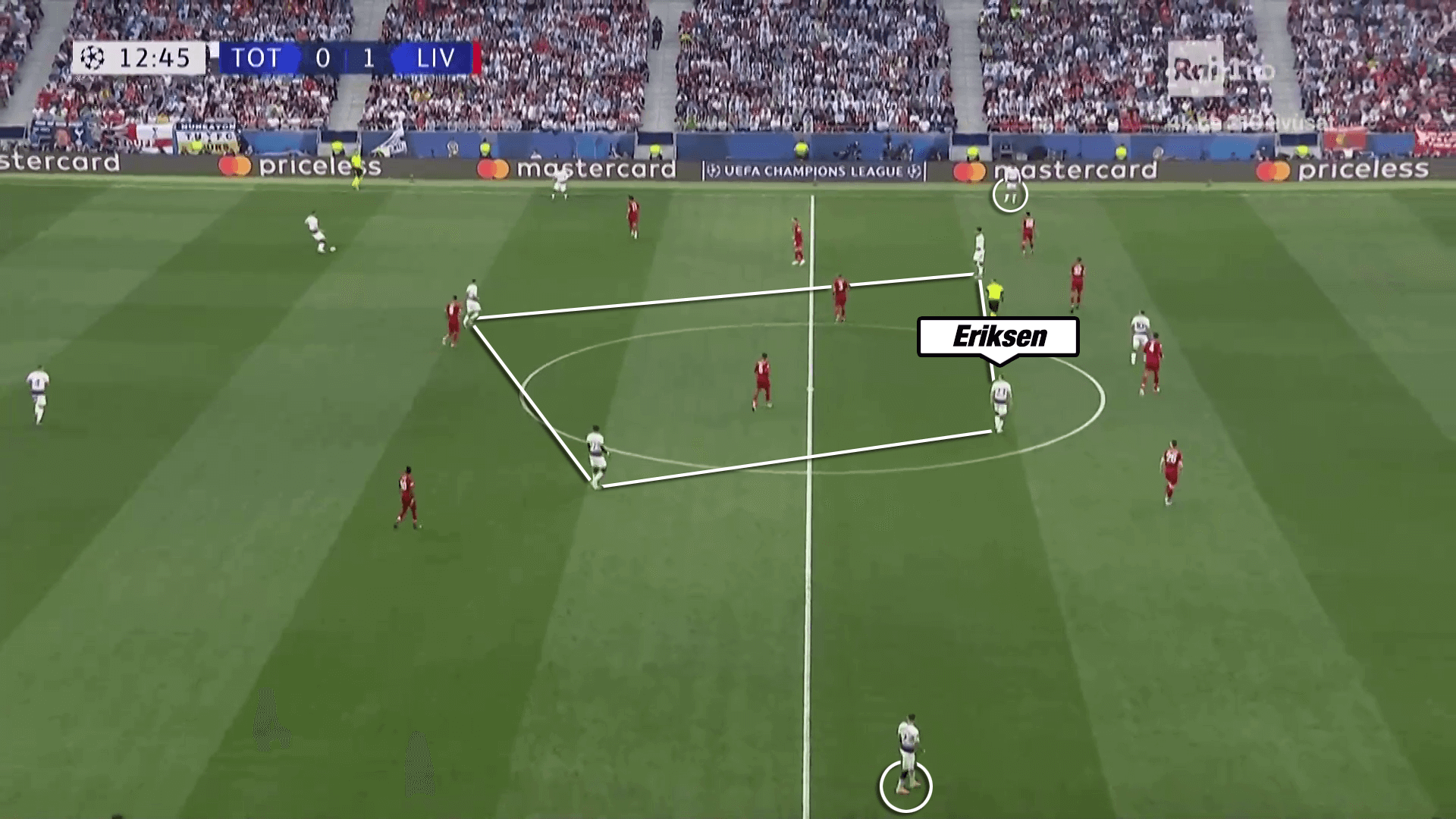
In possession though, Eriksen acts in a playmaking role in the centre of the pitch.
That way, Tottenham create an asymmetrical shape in possession. On the left wing, Spurs play with their winger and their left-back providing width. On Eriksen’s side though, right-back Kieran Trippier moves high up the line. As a consequence, they only provide width with one player on the right side to create a numerical superiority in the centre.
Half centre-back – half central midfielder
The probably most popular hybrid midfielder is the role of a holding midfielder who also plays as a central defender during one of the stable phases of the game (in possession or out of possession). The recent Bundesliga campaign 2018/19 offered several examples of this role. Gladbach under Dieter Hecking and Werder Bremen under Florian Kohfeldt for instance used the benefits of the hybrid version of a defensive midfielder and centre-back.
Bremen midfielder Nuri Sahin played as a single pivot pulling the strings in midfield during positional attacks.
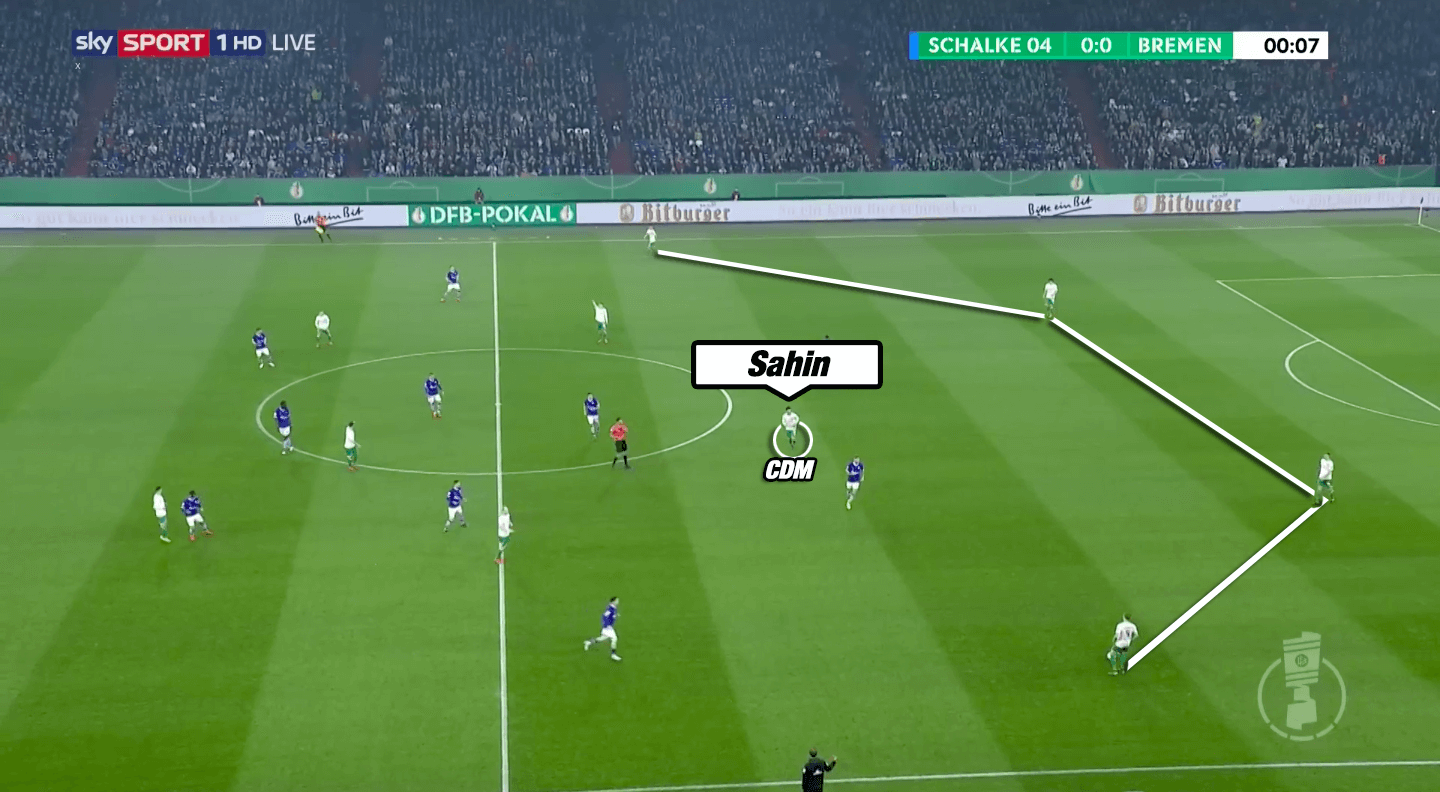
When his side is out of possession, the former Dortmund player drops back between the centre-back pairing.
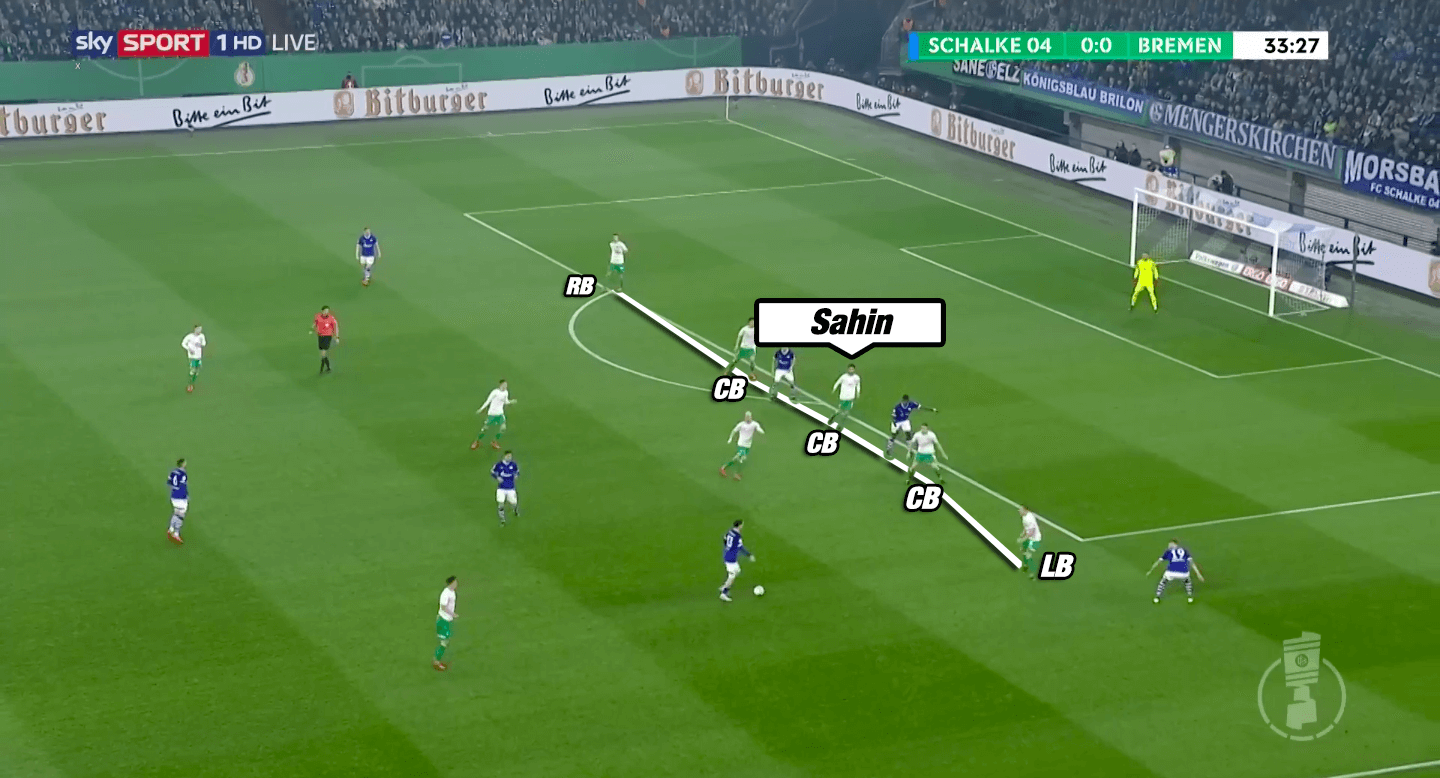
Werder often take this as the opportunity to create a back line with three central defenders. This way, Bremen are able to create a numerical superiority against two opposition strikers within their back line. As a consequence, both full-backs can take over the opposition wingers which enables Bremen’s wide forwards to stay in midfield. By using a back-five situationally, Kohfeldt’s side avoid to be pinned back in a 6-3-1 formation.
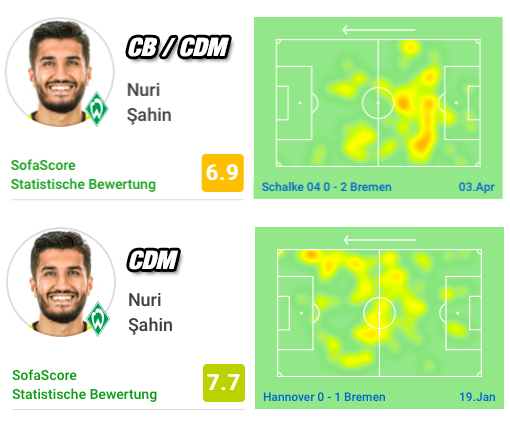
As a logical consequence, Nuri Sahin acts in deeper areas when playing in this hybrid role. The above displayed heatmaps show his area of action in a game playing as a hybrid midfielder compared to a match where he solely played as a central midfielder. One can clearly see a difference. Therefore, every coach needs to think about where every single player on the pitch can take advantage of his qualities. And obviously, this may differ from game to game as this also depends on the opposition setup.
The dropping midfielder
The usage of a dropping midfielder in order to form a back-three in build-up is even more popular. In this case, teams set up with a back four system when defending but aim at building up with three central defenders.
Sergio Busquets for example currently executes the role of the dropping midfielder at Barcelona. During the build-up phase Busquets positions himself between the central defenders as shown on the graphic below.
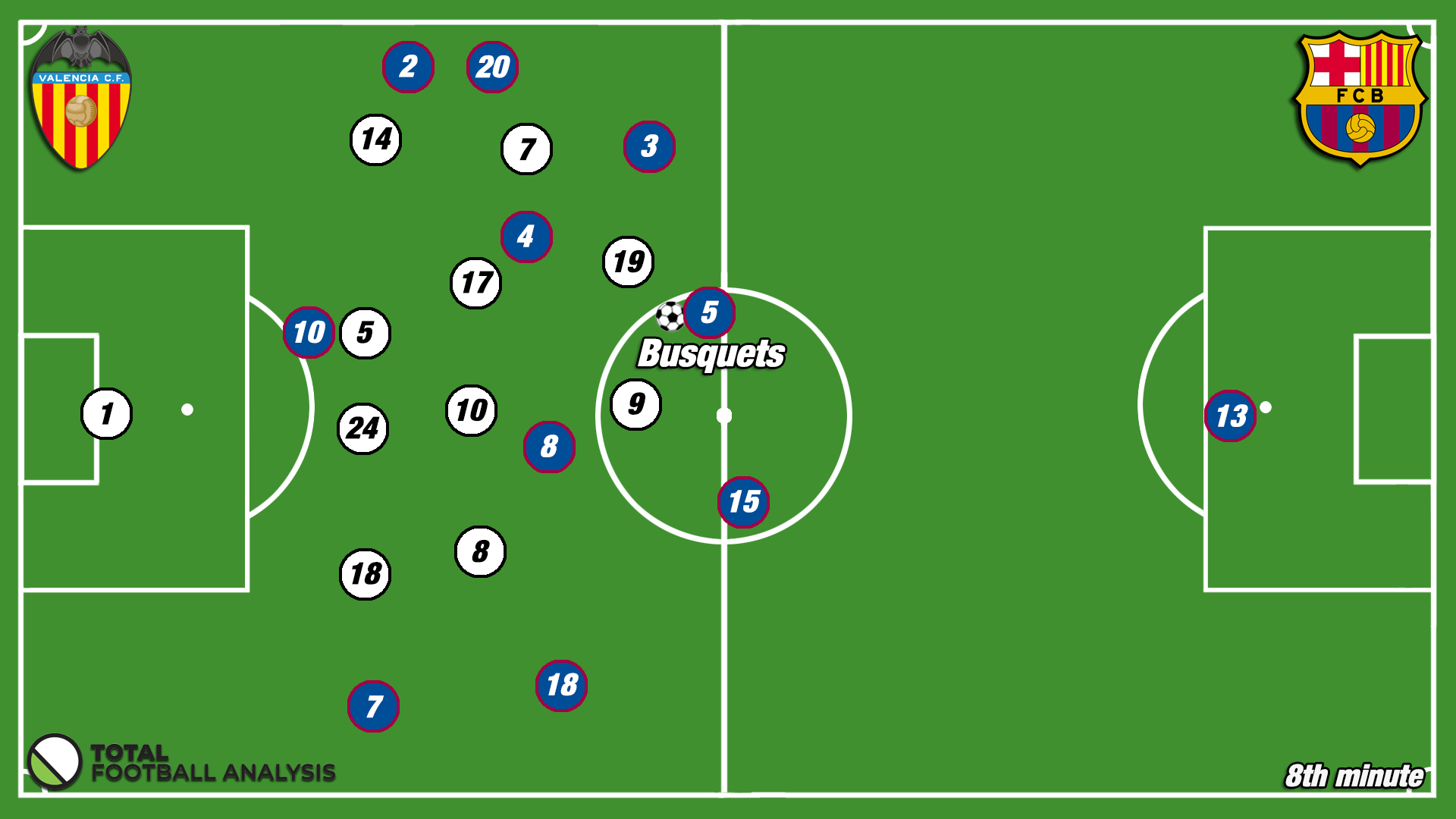
The idea lying behind this concept is to allow both full-backs to move high up the pitch simultaneously without missing defensive cover in the back. Moreover, the back three creates a numerical advantage against an opposition striking duo like in the situation below.
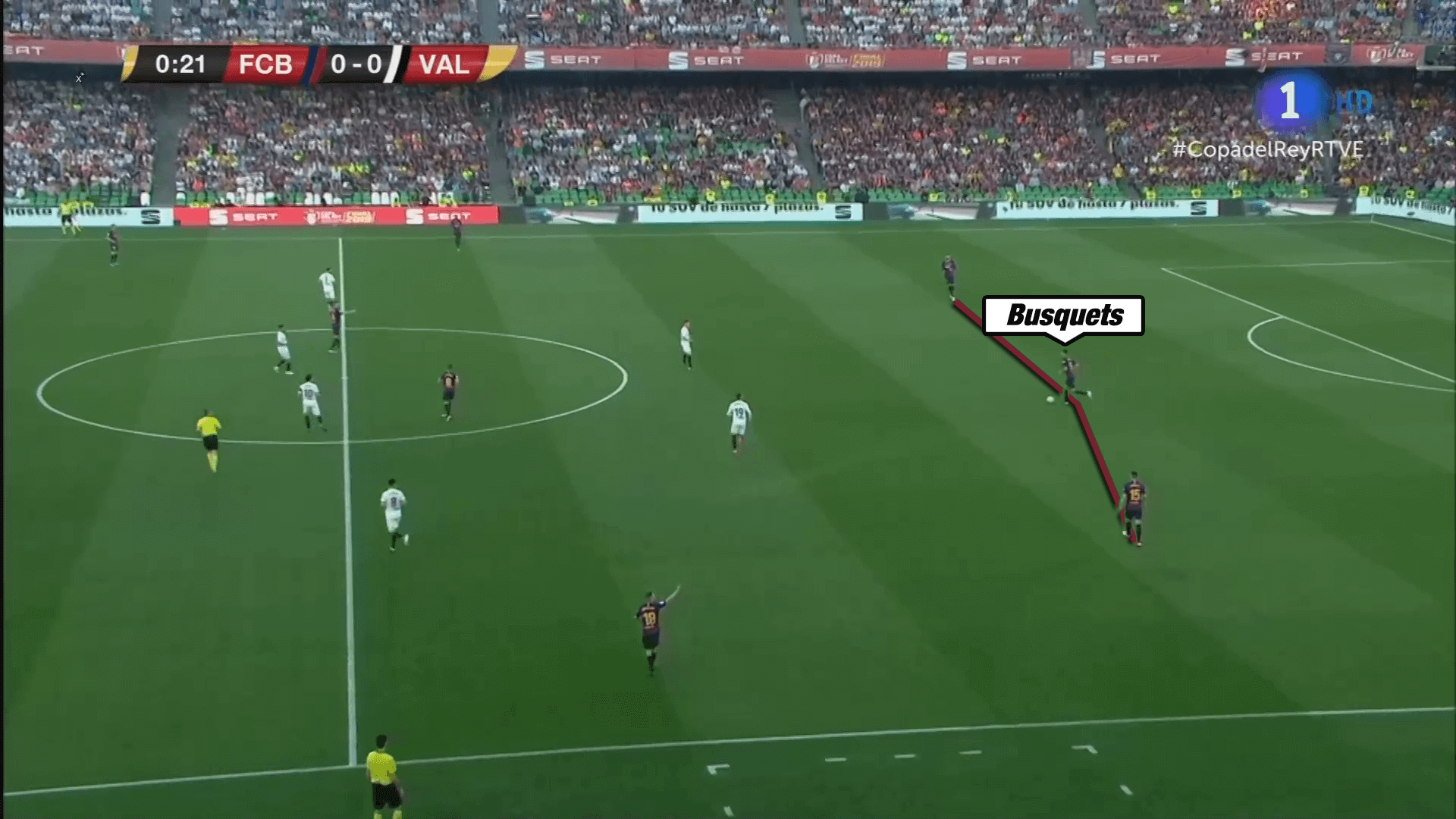
This facilitates playing out from the back.
When defending on the other hand, the midfielder plays in front of the back four to stabilise the central midfield.
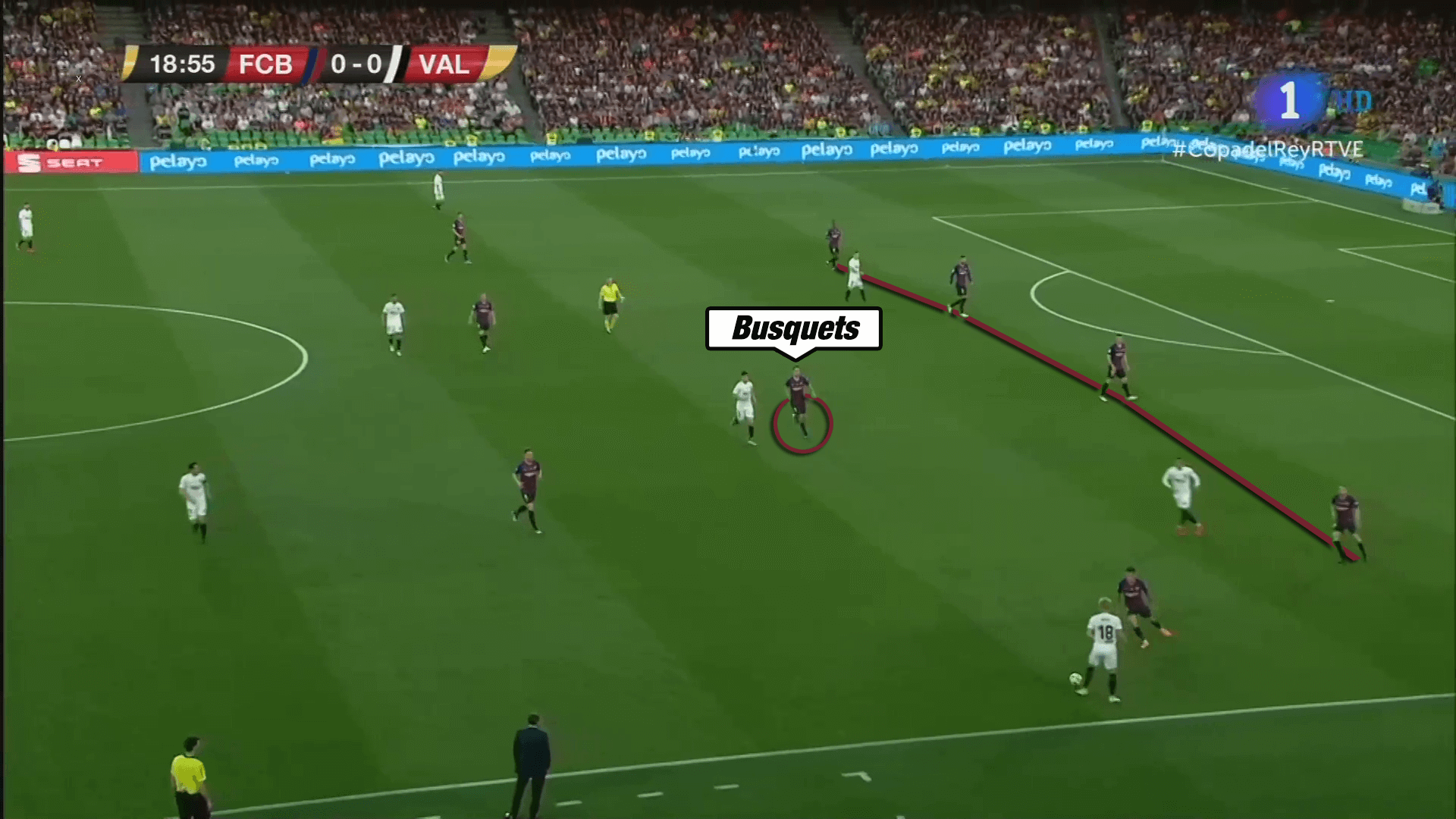
Offensive centre-backs
Another hybrid midfielder role is the one that Frenkie De Jong takes over at Ajax when being lined up as a centre-back. Different to the other hybrid midfielders, De Jong positions himself as a central defender during the defensive and possession phase.
However, the Dutch youngster likes to carry the ball forward into midfield occasionally. Of course dribbling into midfield is one of the tasks of modern central defenders. But what De Jong’s role differs from other central defenders is that the future Barcelona player often stays in midfield once having progressed up the pitch. The situation below shows how the Dutch international is positioned as one of the most offensive players of his side although being lined up as a central defender.
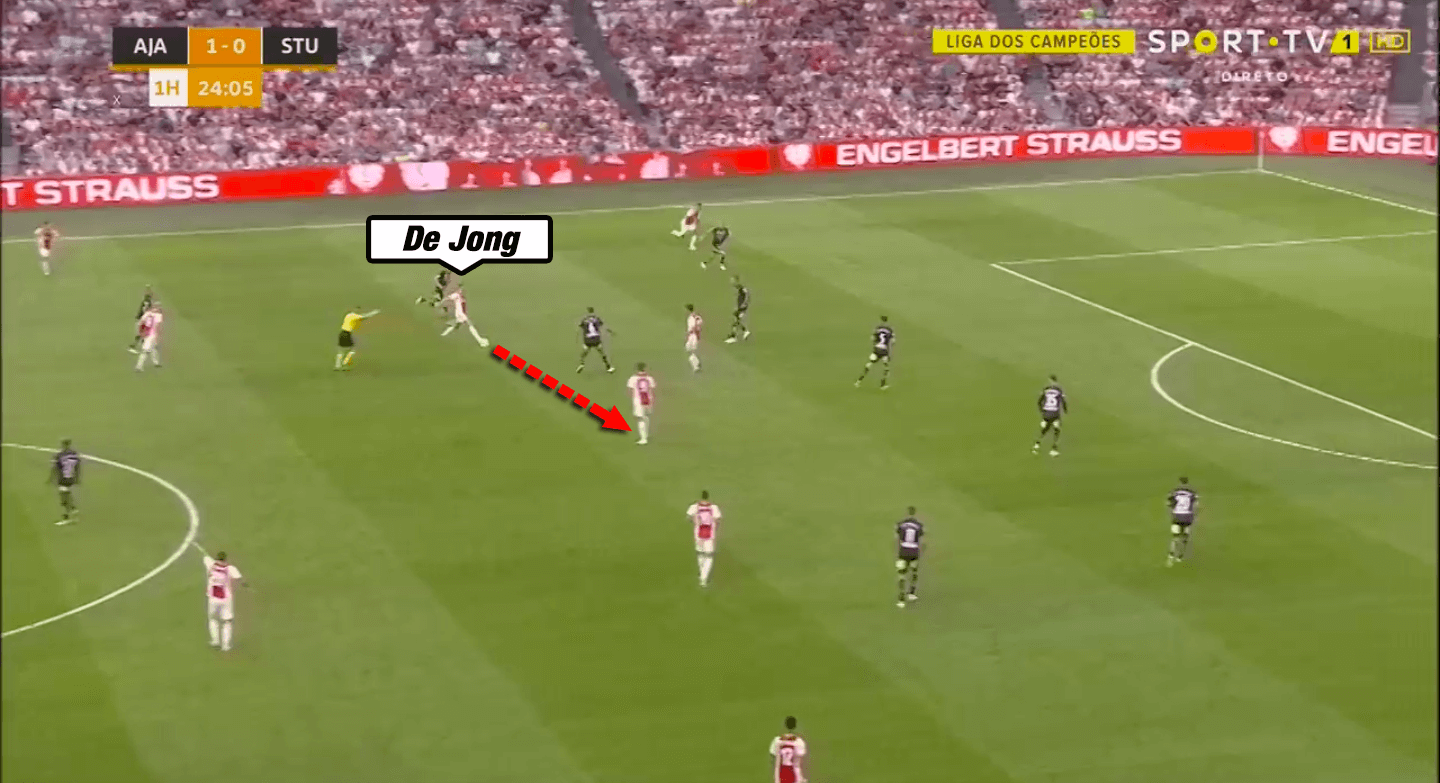
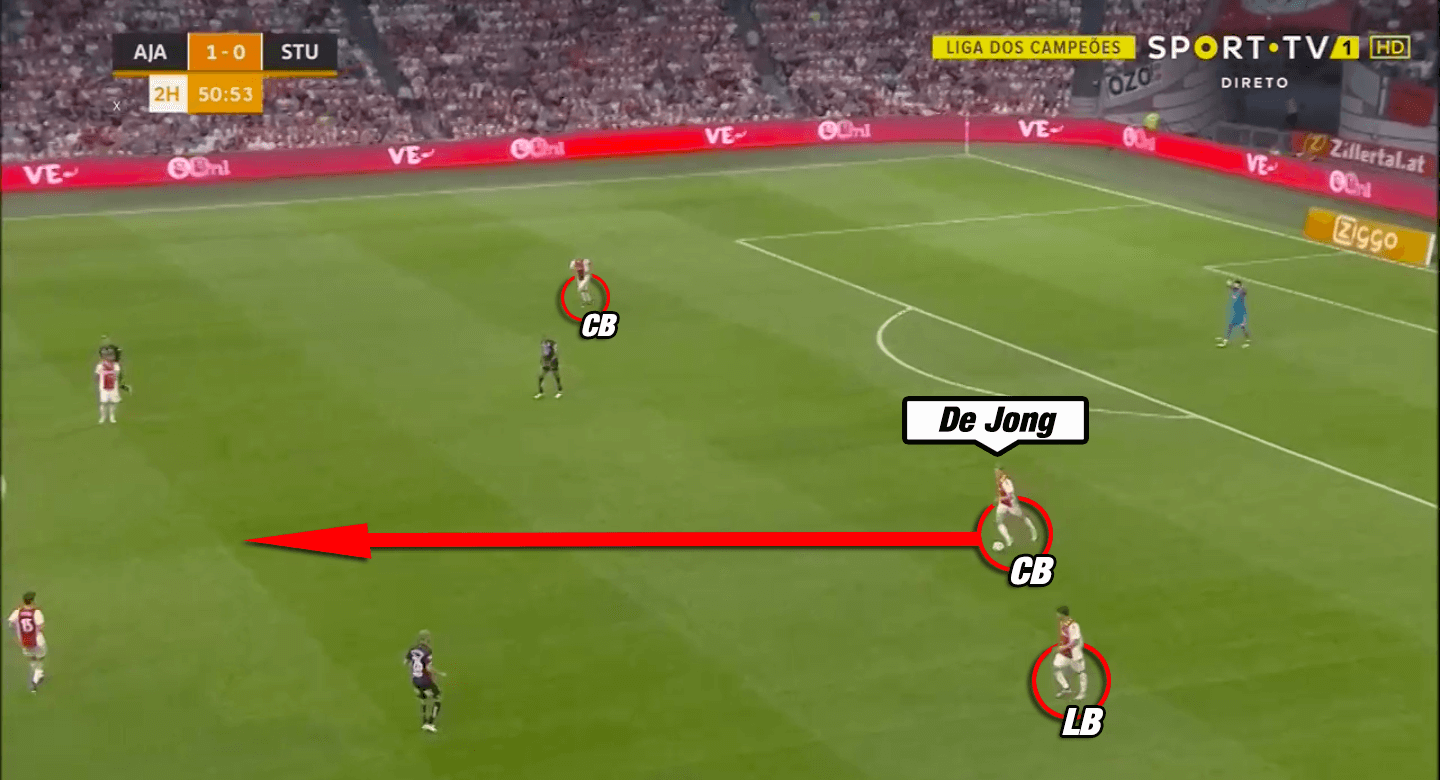
That is only possible since his teammates are aware of the need to take over his position. Either a full-back or a central midfielder stay in the back to provide defensive cover during the attacking phase. As a result, De Jong can counterpress the opposition in a midfield area in transition moments and does not need to worry about his defensive duties as a central defender like in the case displayed below.
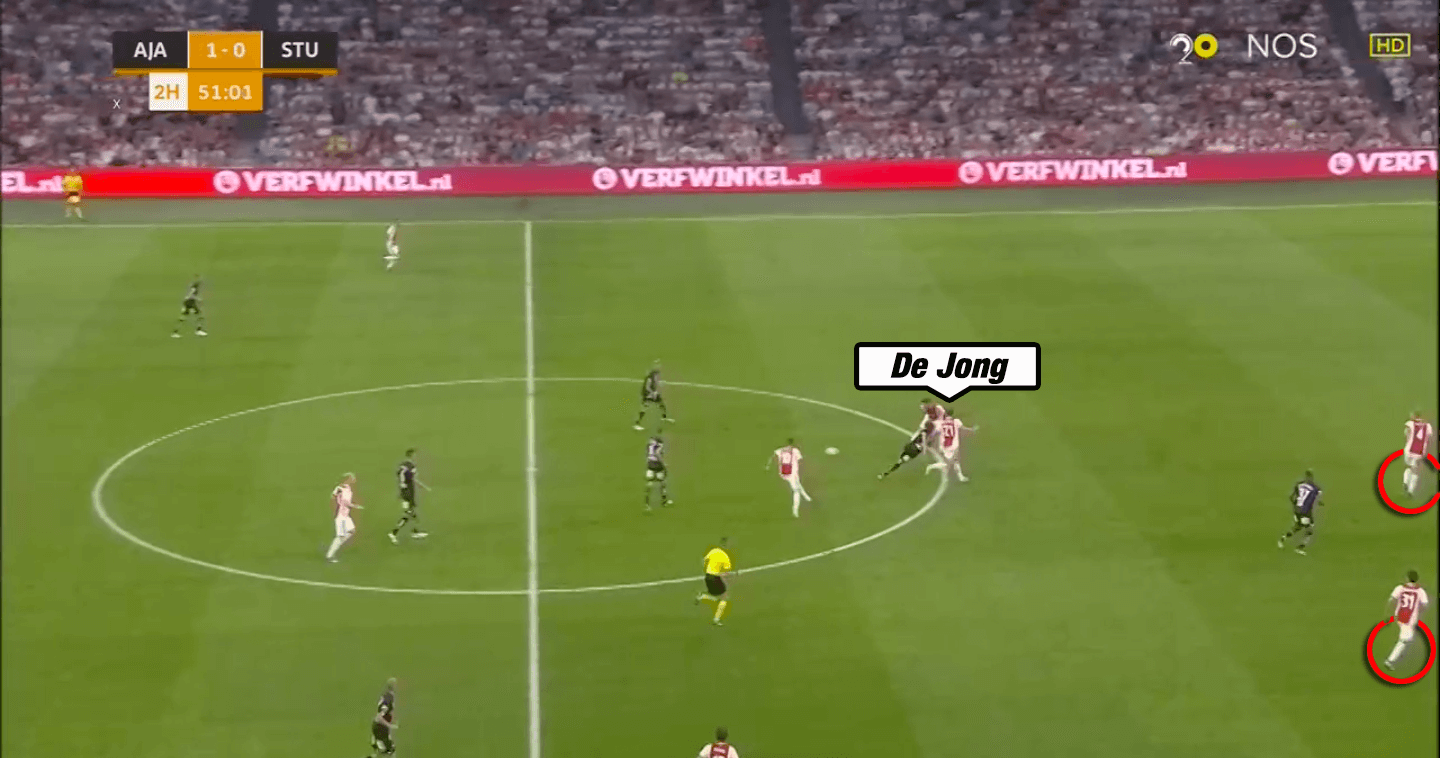
Advantages and disadvantages of hybrid midfielders
As already mentioned in the last paragraphs, hybrid midfielders can be useful to deploy different formations in and out of possession. This enables coaches to perfectly exploit the weaknesses of the opposition and harness the own strengths by providing different systems with and without the ball. Furthermore it is advantageous for utilising the qualities of a certain player in certain areas of the pitch.
Despite these advantages though, it is necessary to clearly communicate on the pitch in order to keep up the intended shape. Especially during transition phases, teams need to be aware of their different setup and quick reorganisation is vital.
Conclusion
All in all, our tactical analysis has shown that hybrid midfielders can be a useful tool. Either in order to make use of the skill set of individual players or to create different shapes in and out of possession.
Nevertheless, as every single player has an impact on the shape of the whole team, it is necessary to outweigh the positive and negative effects on the system.
If you love tactical analysis, then you’ll love the digital magazines from totalfootballanalysis.com – a guaranteed 100+ pages of pure tactical analysis covering topics from the Premier League, Serie A, La Liga, Bundesliga and many, many more. Buy your copy of the May issue for just ₤4.99 here, or even better sign up for a ₤50 annual membership (12 monthly issues plus the annual review) right here.

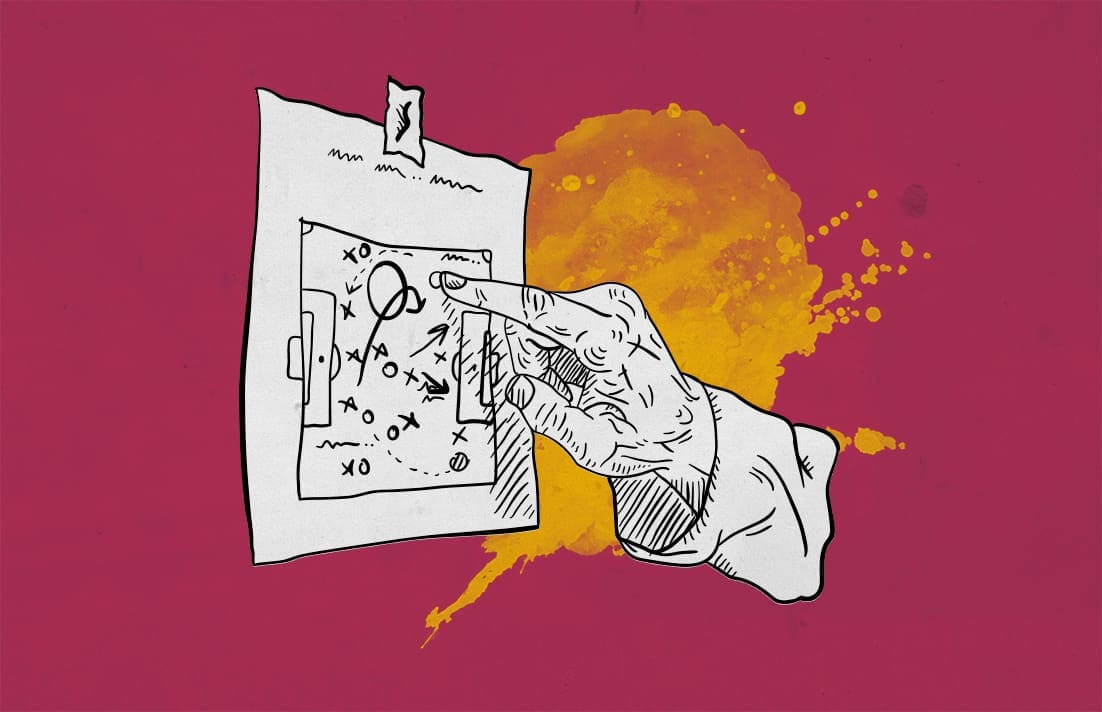


Comments